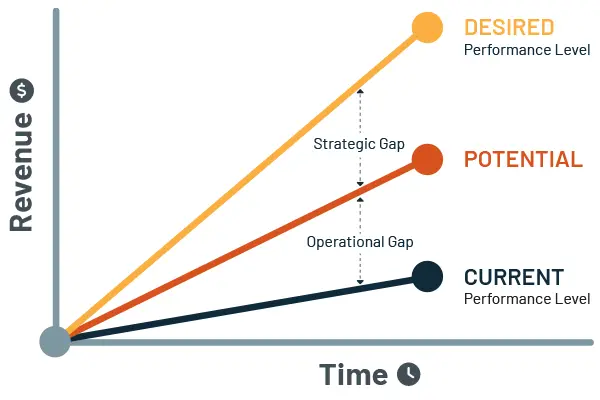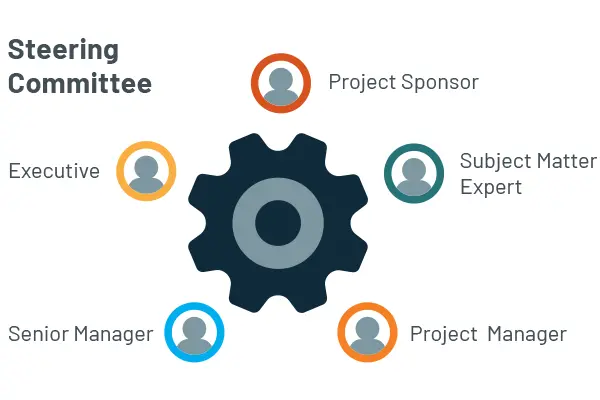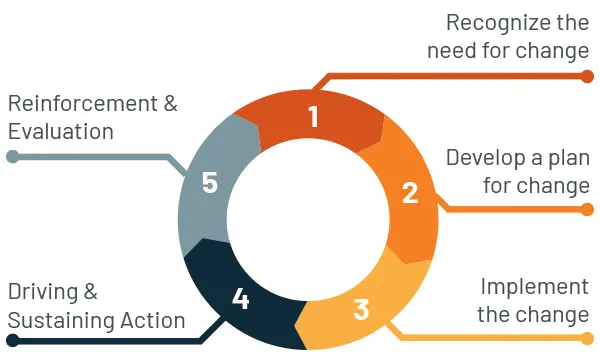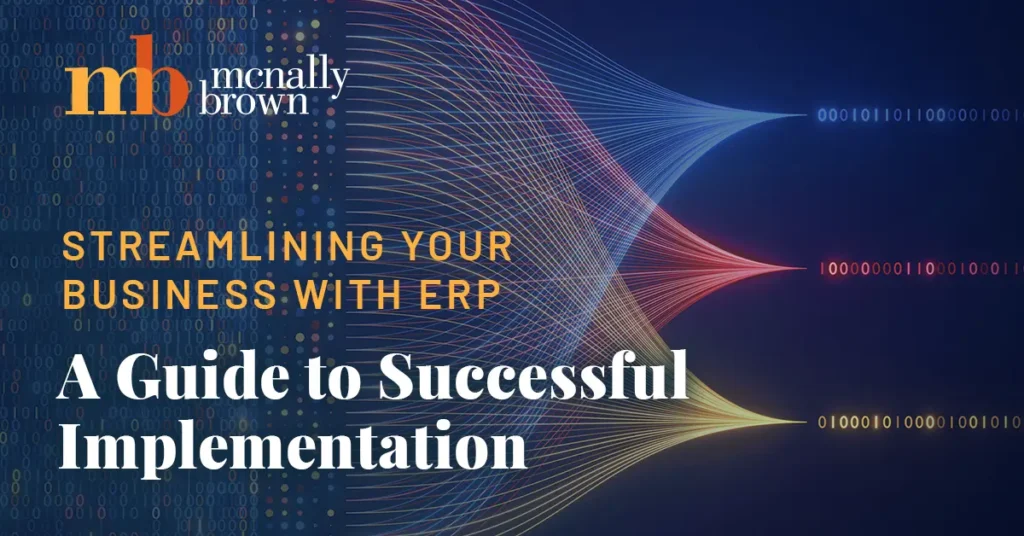Unlocking Growth
Digital Transformation for Small and Mid-Sized Businesses
MAY 3, 2025 // 5 MIN READ
Digital transformation is critical for small and mid-sized businesses (SMBs) to stay competitive and improve business performance. Adopting technology to better serve customers, improve processes and enhance efficiency can be a real competitive advantage. Here’s how SMBs can develop and execute a strategy for successful transformation.
What is Digital Transformation?
At its core, digital transformation includes:

Enhancing Customer Experience
Leveraging digital tools to improve customer engagement and support.

Process Automation
Adopting new technologies, to streamline manual tasks and improved accuracy.

Paperless Transition
Moving from paper-based systems to digital workflows.
Aligning your Digital Transformation Strategy
Company Strategy
Where do you want your business to be in 3-5 years? How can digital transformation help you get there?
Key Processes
Which core processes add value to customers and support overall strategy?
Data
What data do you need to collect and analyze to improve business performance and decision making?
Existing Technology
Can your current technology infrastructure support future growth?
What Should Your Strategy Include?
Gap Analysis
Review current processes and identify opportunities for improvement in key areas of the business.

Project Plan
Clearly define success, set realistic timelines, and establish how you’ll measure progress.

Governance
Establish a Steering Committee including key leadership members and subject matter experts to oversee the transformation project.

Data Requirements
Ensure your data is good quality, secure, structured, and ready for integration with new systems.

Return on Investment
Evaluate technology solutions for cost-effectiveness and establish realistic budgets to measure return on investment.

Organizational Changes
Identify structural or team adjustments necessary to support the transformation.

Change Management
Plan how to manage the people side of transformation, ensuring smooth adoption and minimizing resistance.

Evaluating New Technologies
There are many factors to consider when evaluating new technologies, and it is important to do a thorough assessment to ensure the chosen technology will meet the organization’s needs and achieve the desired return on investment. Key areas to consider include:
Core Requirements
Based on the strategy, gap analysis, etc., identify the essential features to support both current and future business needs.
Technology Vendor Attributes
Assess the vendor leadership bench strength, check customer referrals, understand their R&D strategy and market consolidation risk.
Customization vs. Configuration
Evaluate whether to customize software to meet niche company requirements or configure it and adapt to new processes.
Integration Requirements
Ensure integration requirements with existing processes and software are fully understood.
Field Data Collection
If your business relies on real-time data from the field (e.g., inventory, timesheets), ensure these unique requirements are considered.
User Base and Access Scope
New software often means more employees will need access to the platform. Assess the level of access needed and costs.

What About AI?
AI presents exciting opportunities but requires a solid foundation:
Data is Key
AI relies on good quality, structured data, so ensure your data is ready.
Feasibility and Cost
Assess whether AI is practical and cost-effective for your business.
Change Management
Introducing AI requires planning for its impact on processes and the organization.

Technology Implementation
A successful digital transformation requires careful planning, resource allocation, and active oversight. For a successful implementation, consider:
Project Team
Ensure robust project oversight through the Steering Committee, assign a dedicated Project Manager to manage project objectives, schedule and budget, and build a project team with cross functional representation.
Manage Schedule & Budget
Efficient decision-making, timely data cleansing, and a clear testing schedule are key to maintaining momentum. Ensure the project schedule is realistic and appropriate resources are in place.
Change Management and Training
In additional to software and new process training, understanding and communicating the impacts on employees, customers and vendors is essential.
Data Management
Establish what data is migrating to the new technology, formatting and security, and what legacy data is being archived. Effective data management ensures smooth transitions while preserving secure access to historical information.
Lessons Learned from Managing Digital Transformation
Implementing new technology is a major step for SMBs, but even the best plans can be derailed. Here are some lessons learned:
Time and Resource Underestimation
New technology requires technical knowledge and a deep understanding of business processes, stakeholder engagement, testing, and training. Companies should develop a realistic timeline and allocate adequate internal and external resources.
Importance of Cross-Functional Representation
Omitting input from key departments can result in a system that doesn’t meet diverse business needs. Involving relevant stakeholders ensures the solution addresses the unique challenges of the entire organization.
Understanding Current Processes
Not identifying key processes and gaps can lead to misaligned expectations and inefficiencies. Documenting and analyzing current processes are crucial to identify areas for improvement and ensuring the new technology aligns with business needs.
Customization Challenges
Some companies attempt to customize new software to match their current processes which often proves costly and impractical. When businesses adapt their processes to fit the technology’s best practices, this simplifies implementation and delivers long-term value.
Change Management and Training
New technology is about more than just software; it’s about people. A comprehensive training plan and ongoing support will help employees feel comfortable with the new system, ensuring successful adoption.
Final Thoughts
Successful digital transformation requires careful planning, active oversight, and effective change management. By recognizing your company’s strategic objectives and process gaps, assessing technology opportunities and creating a digital transformation team, you can maximize your technology investment and improve business outcomes. Regardless of where you are in your digital transformation journey, we can support you in the process.
About the Authors
Colin and Laura founded McNally Brown Group in 2012. They both have engineering backgrounds and are graduates of the Richard Ivey Executive MBA Program. Colin and Laura bring complementary expertise, a balance of hands-on experience, technical training, family business knowledge, and international experience to clients.
Explore Related Resources to Digital Transformation for Small and Mid-Sized Businesses

The Power of a Clear Strategy: Unlocking Success for Your Business
Does your business have a clear strategy? And if you were to ask your leaders what that strategy is, would you hear consistent answers? If the answer is “no,” your business might be missing a critical piece of the puzzle when it comes to sustained success.

Streamlining Your Business with ERP: A Guide to Successful Implementation
Many small to mid-sized businesses struggle with efficiently managing data and using it for informed decision-making. Information is often scattered across departments and formats, such as spreadsheets, accounting systems, and specialized software, making compilation and reporting time-consuming. The solution frequently involves implementing a new software platform, and many companies opt for an Enterprise Resource Planning (ERP) system.


